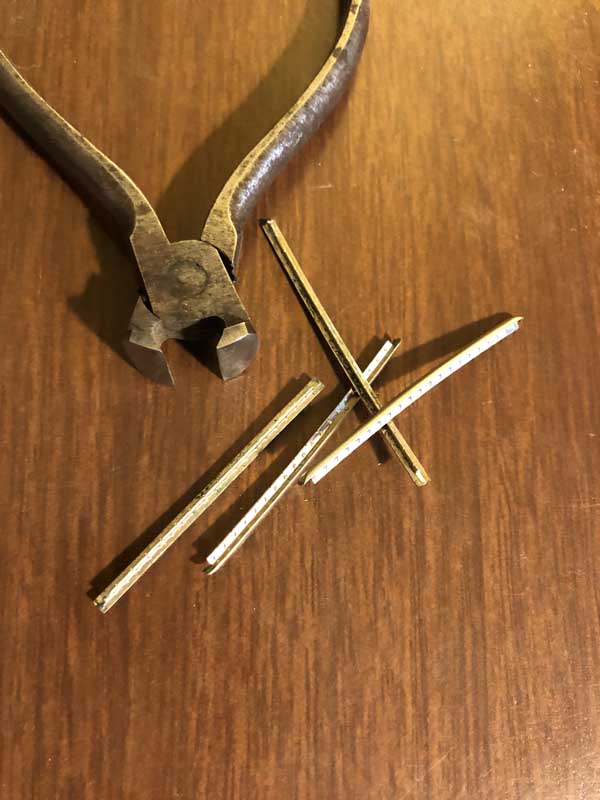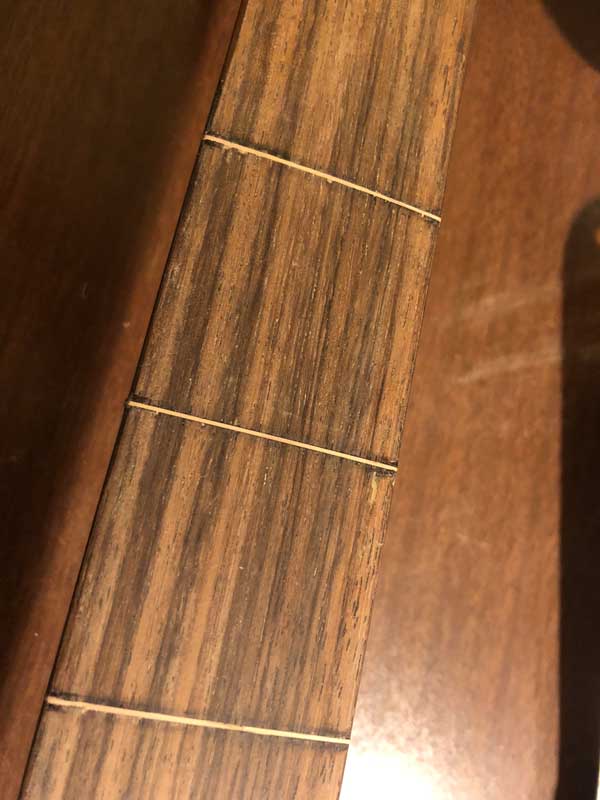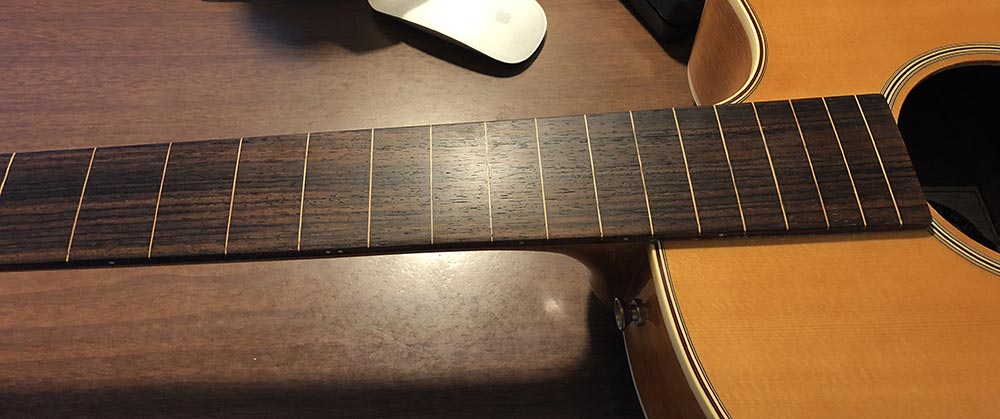Lately, I need a bass that has some stand-up (-ish) sound. To be clear, I will not be buying a $tand up bass, I lug enough heavy crap around now. But the keyboard player wants to play some Fox Capture Plan type tunes, and then somebody asked if I had an upright, or anything that sounded like an upright, or if I'd buy an upright.
"No. No. And, never. But I could change #2."
A fretless acoustic bass guitar with low action, low tension flats, a bridge mute, and played single finger way up on the neck comes pretty close. Close enough.
The 5% humidity here is death for stand-up basses anyway. An old Alcoa bass would be great (100% aluminum), but they cost a medium sized fortune, even for something that needs a rebuild. Even more than a good wood bass these days. I might -make- one someday. I do have the tools and know-how. Maybe when we move somewhere cooler.
Where avocados grow.
So, about 20 years ago, I bought an Alvarez AB60 in a Reno pawn shop. "Get it Rick! We'll do acoustic jams!" said the singer.
Riiiight. But I bought it anyway.
I think I've played it maybe 5 times since then. Modern acoustic bass guitars really suck for playing acoustic bass. They are nowhere near loud enough to keep up with a guitar. And unless stuffed full of towels or fitted with a thick rubber sound hole plug, they will feedback uncontrollably when amplified on stage. Useless, x2.
It was the logical victim to modify...
There it is, between the Silvertone 618 jumbo and FrankenTele in my old studio.
Modified small nippers converted into fret yankers. I yanked out all the frets before I thought to take pics, so this shot is all I've got for the timeline.
The nippers were ground down on the head to be slightly rounded and extremely sharp. They get under the fret edges easily and rock them right out.
This particular Alvarez's frets looked like they were either glued in, or there might have been some type of fretboard varnish/finish that seeped underneath the wire. Either way, a quick heat with a soldering iron turned it to powder, and loosened up the frets. This fret wire had small barbs and they were pressed straight in, so there was minimal chipping. Any chips that did pull got a glob of CA and were -immediately- pressed back down.
There's one, dead center.
Glue/crud/residue needed to be removed. A very, very light draw with the fret saw takes it back to wood.
I cleaned out the grooves but left the dust on the edges. There is a method to the madness → CA and rosewood dust makes a nice filler for the tiny barb grooves.
Maple veneer strips fill the fret slots. The veneer strips fit snug after just a few swipes over 220 grit.
I used CA glue since it wicks and will fix any unseen chips. Plus, it dries very fast, and I wanted to get on with the leveling once everything was shaved and scraped down. And after the leveling: oiling, nut and bridge adjustments, truss rod adjustments, getting it set up and strung, and playing. ASAFP. This whole project took about 4 hours, start to finish. From in the case to playing fretless.
I shaved the veneer with a razor blade. Using it like a tiny draw knife. Careful not to nick the rosewood!
And, down to the rosewood.
Carefully scraped clean. You can still see the fret wire UV shadow. The dark areas will sand clean and be invisible after oiling.
Howard's "Orange Oil and Beeswax" makes old dried-out rosewood happy.
The maple lines contrast well. The fretboard and the maple soaked up a lot of oil - 10 years untouched in a case and the rosewood was good and dry. And I've had the maple veneer sheets forever. The fret shadows completely vanished after the leveling/sanding and oiling, and the maple went from stark white to a nice... well, "maple" color. The tiny barb groves in the fret slot edges filled in with rosewood dust and CA when I layed in the vener strips. They were a bit darker than the dry rosewood, but vanished once thefretboardfingerboard was oiled up. You can't see any of them unless you get up really close and look carefully. Nobody is ever going to get up that close.
Hey! NOT a Jaco hack job! To be fair, Jaco was just a kid when he butchered his jazz bass in his mom's kitchen. He didn't know that Fenders had frets pushed in from the side (until the early 80's). Straight out/standard fret pulling on pre 80's Fenders = serious chipping. His de-fretted fingerboard's lines looked like a sharkbite. Ugly.
So he added bondo and a few layers of epoxy - and "Jaco's sound" was born. So it goes.
No epoxy or CA or any finish, other than orange oil. I don't really want that hard bright growl. (So, yeah... see update below)
Compare the invisible filled barb grooves below on the fret slots in this pic, with the obvious grooves visible on freshly yanked slot a few pics up (3rd pic).
Put back together, strung up with old flats, and set up with a foam mute (that's where I like the mute placed), and, yeah, a thick rubber sound hole plug.
That's Grandma's crocheted throw ("Acrylic yarn is the future!") on the chair.
It plays very nice now. Decent bloom and good mwah with the flats that are currently on it. The foam mute tames the sustain. Played correctly it has a good ersatz stand-up sound. The string noise and flats striking the fingerboard come through the pick-up a tiny bit clacky/hot so I may try some lower tension tape wounds.
The helpful suggestion maker voice in my head keeps asking: What about gut? Hmm.
While it was unstrung, I also deglossed the back of the neck (light 400 sanding, then a scotchbrite buff). Glossy necks are slow players. The bridge needed to be shaved down a bit, of course, as did the nut. And I set up the nut to put the strings just a bare hair above the fret board. One step up off the nut plays true to position.
The action is quite low, all the way down the extension.
Next up, grafting a 3/4 bass neck onto a junk guitarron body. I think it will work. I need arco! I haven't played a bowed instrument since grade school.•••
Update:
It plays how I want it to play with Roto 88's and the fingerboard sealed up. The stand-up gut string experiment was a failure.
Despite being tapewound, the Roto's (and the flats, for that matter) were leaving marks in the rosewood fingerboard. So I de-oiled the neck with a few vigorous wipes using a cloth soaked in mineral spirits, then finished the board with about a dozen thin layers of cyanoacrylate, (aka, crazy glue). Re-sanded, finished, final sanded down to 2000, it polished up real nice. Wet sanding with mineral spirits works great when you don't want to risk raising grain anywhere. The fingerboard finishing took longer than the rest of the whole defretting project. But there it is. Sounds great, and it is a blast to play.











